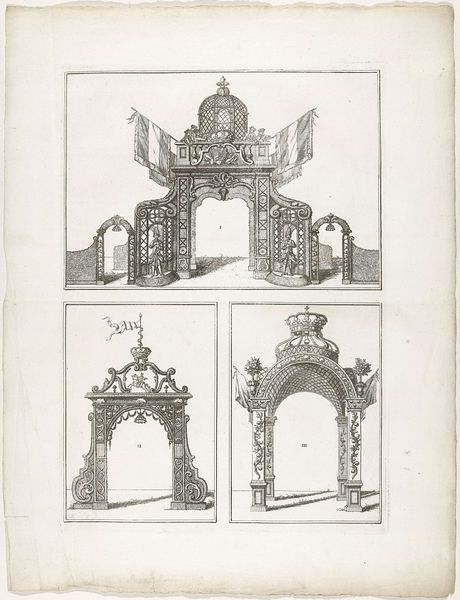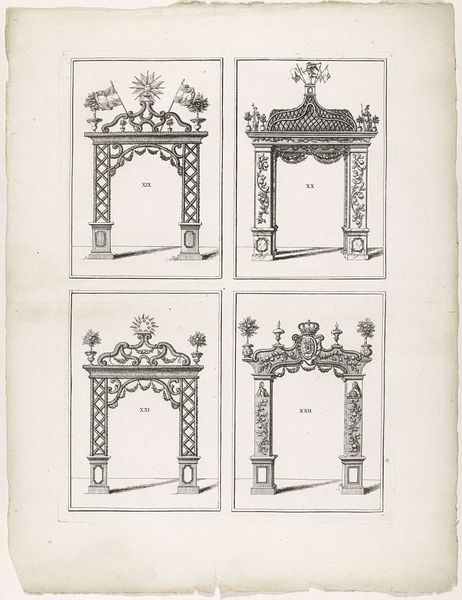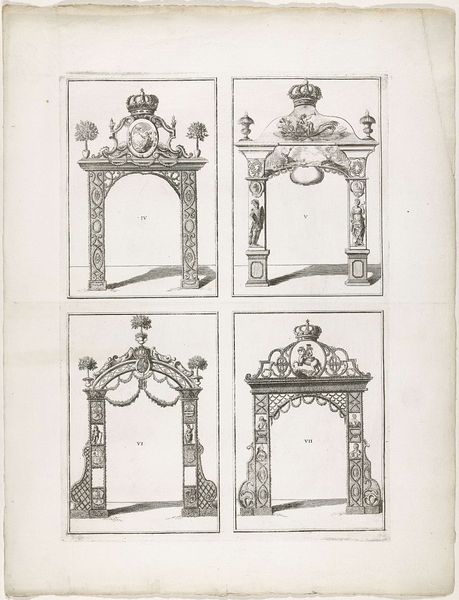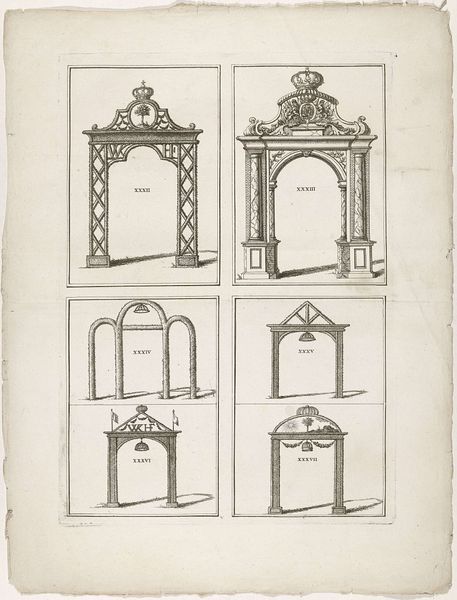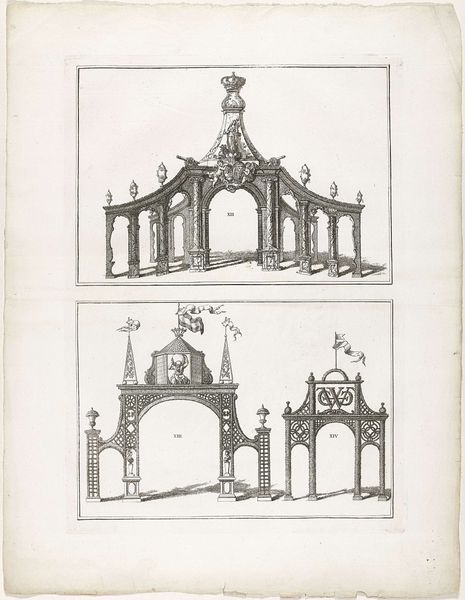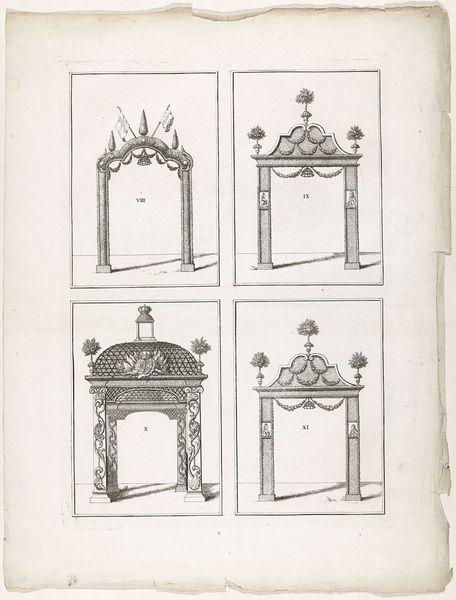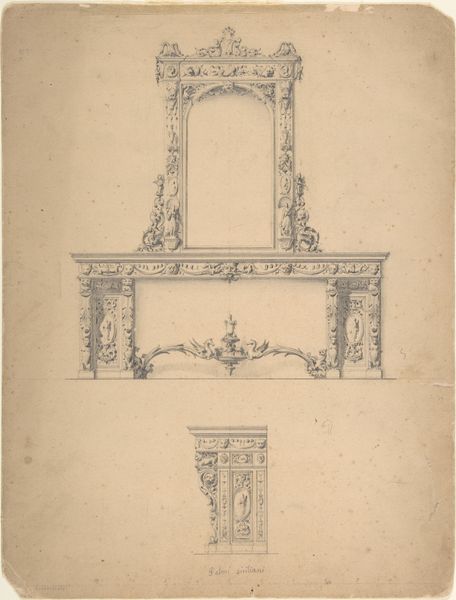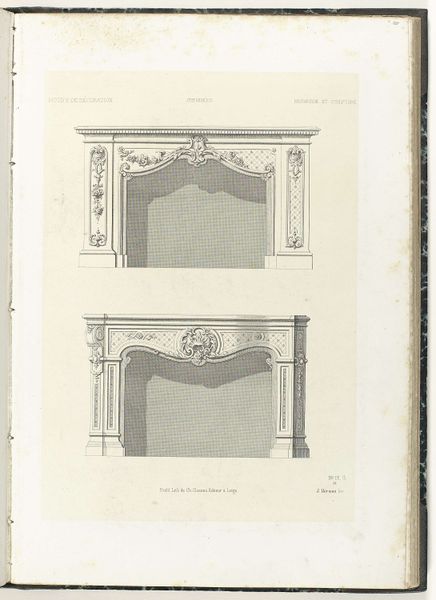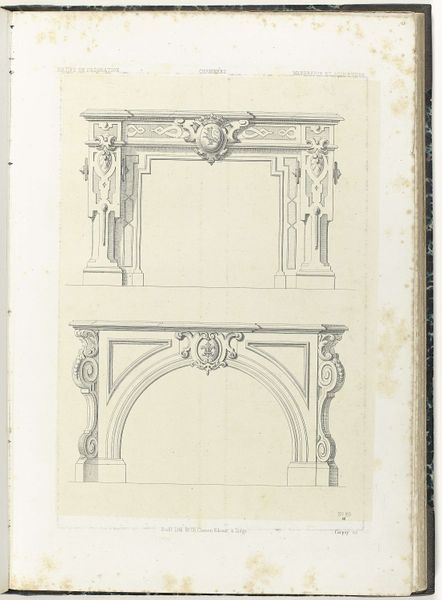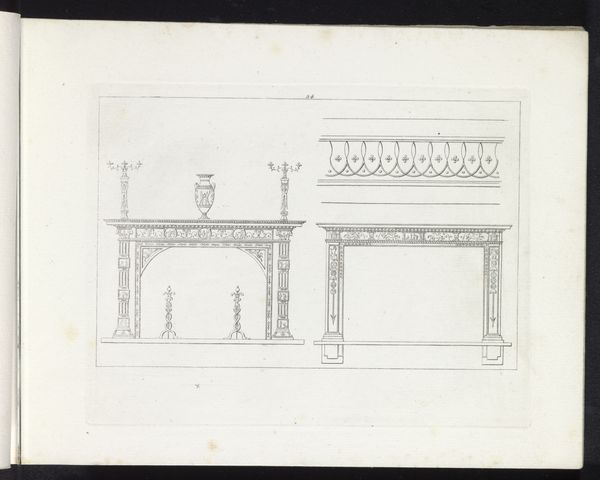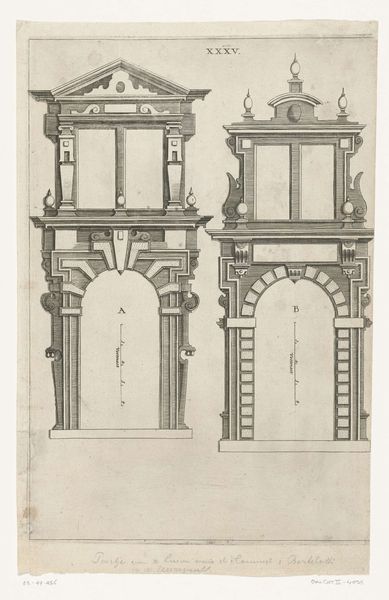
Dimensions: height 545 mm, width 420 mm
Copyright: Rijks Museum: Open Domain
Albertus Frese designed this print, Erepoorten XXIII-XXVI te Den Haag, in 1747. It’s an etching on paper, a medium that allows for precise detail and reproduction. Frese used the linear quality of etching to emphasize the architectural elements, which would require skilled craftsmanship by carpenters, masons, and other laborers. Each archway is a unique design, with variations in ornamentation, from floral garlands to elaborate crests, and are meticulously rendered. These arches were likely temporary structures, erected for celebrations or ceremonial occasions in The Hague. The print thus serves as a record of ephemeral constructions, transforming them into permanent images. While seemingly far removed from the physical labor of building, it reminds us that the skills of the artisan are always mediated by representation. Frese's print prompts us to consider how art preserves and elevates the everyday, blurring boundaries between design, craft, and high art.
Comments
No comments
Be the first to comment and join the conversation on the ultimate creative platform.
